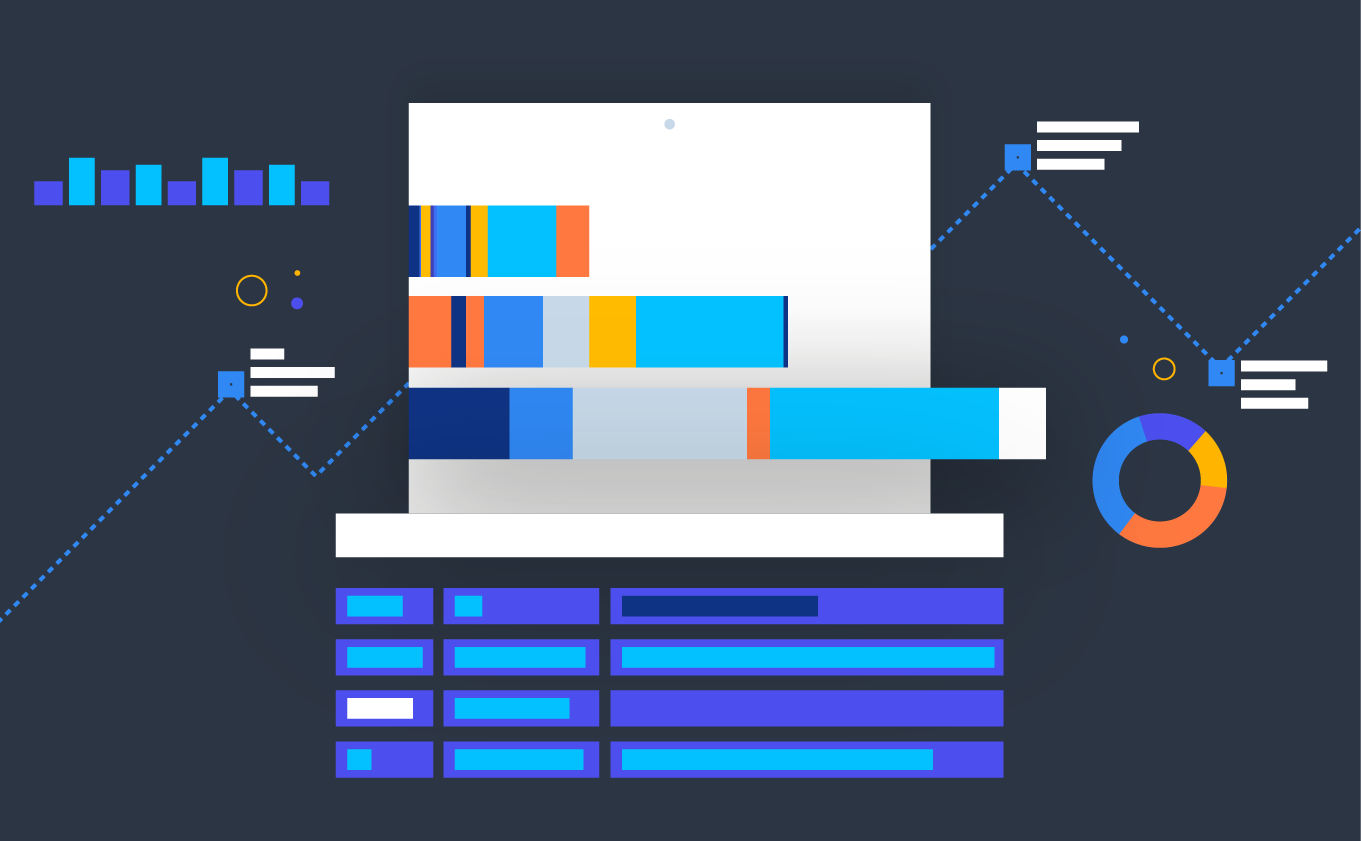Content
Stay up to date on the latest happenings in digital marketing
What could you learn if 20% of the internet’s traffic traveled through your servers? Way too much, as it turns out, which includes some very interesting tidbits for mobile marketers. That’s why 1 of the things I look forward to every year is Cloudflare’s year in review report.
Among other things, Cloudflare is a content delivery network, and that means it sees a massive percentage of global internet traffic. Internet traffic matters for app publishers and advertisers: just like roads and bridges might matter for physical goods retailers, the internet is how you build, distribute, and market your products.
It’s mostly invisible to us, hidden behind App Stores and AWS instances, but when it breaks or fails, it becomes very top of mind.
So what’s interesting in this year’s Cloudflare report? Read on …
Year in review: the coin of our ecosystem is up
Internet traffic is up 17.2% versus 2023: a massive leap in just 1 year. That likely correlates to a growing digital economy, just like new roads and physical infrastructure correlate to a growing traditional economy.
It also correlates with rising spend trends for long-term Singular clients.
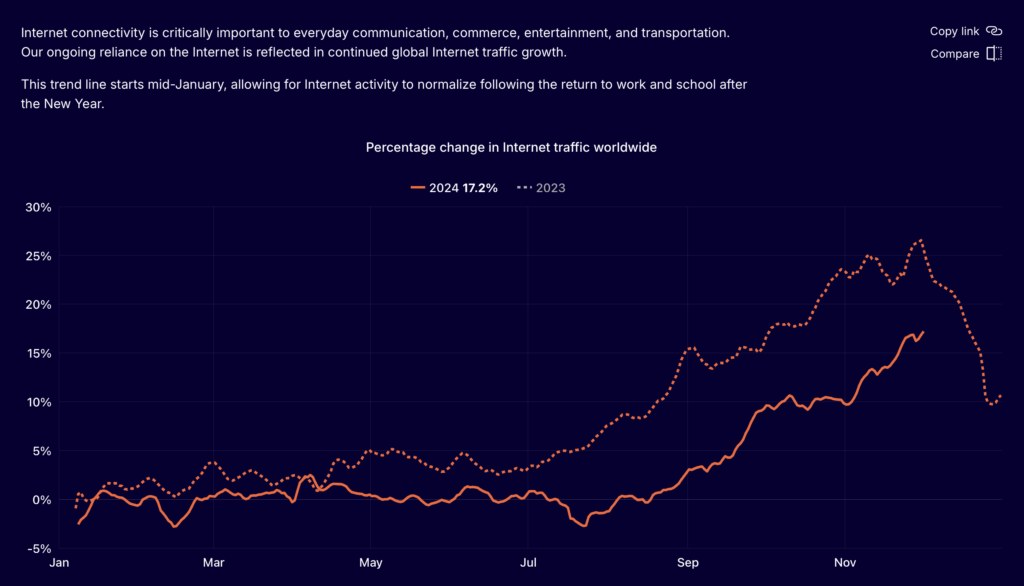
Interestingly, as you can see, traffic increases in the Northern fall and early winter seasons.
A growing digital economy is a rising tide that tends to lift all boats: ad monetization is the first and most obvious beneficiary, but in-app purchases and subscriptions also tend to rise when more of life in general and economic activity in specific happens digitally.
More internet use, therefore, is a growth signal for the industry.
The giants of our industry are truly giant
It’s easy to forget when we’re heads-down in growth or campaign optimization that the giants of our industry are not just big fish in our local pond. They’re literally the biggest fish in the global ocean.
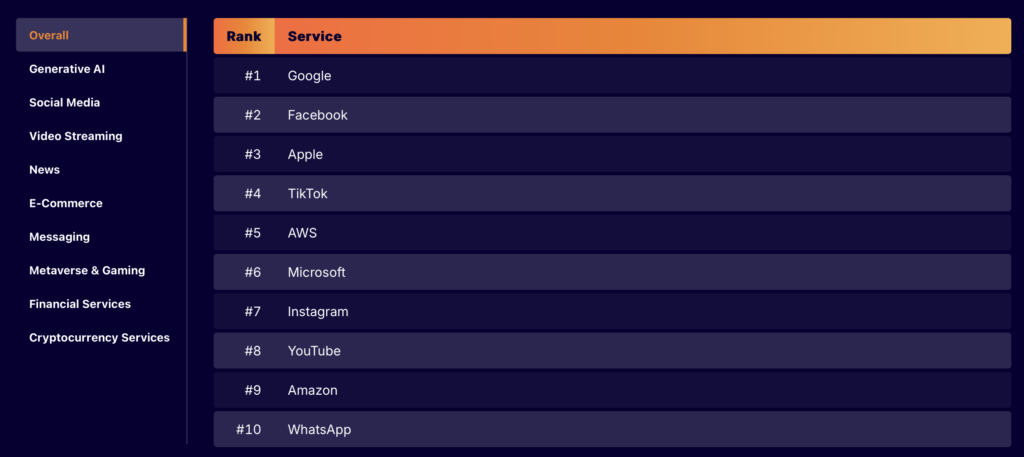
That’s why it’s useful to look at the occasional year in review.
Google is #1. Apple is #3 on the top 10 most popular internet services globally. YouTube alone is #8 by itself, while Meta has Facebook at #3, Instagram at #7, and WhatsApp at #10. Add in TikTok at #4 and you have 4 of the most important companies for mobile marketers anywhere as top-ranked companies by digital footprint globally.
Dialing into social properties specifically, X still has a significant userbase at #4, followed by Snapchat at #4. Reddit, which has been growing in importance for marketers over the past year, slots in at #10 among social platforms.
It’s also interesting to see who has the largest digital properties in gaming:
- Roblox is #1
- Fortnite is #3
- EA and Blizzard are in the top 10
- So is Riot Games with Fortnite
Year in review: iOS vs Android by geo
We all know more than 70% of phones sold globally run Android, while iPhones account for about 28%. iOS does punch a little above its weight class, however, in internet traffic share, which is 67.4% Android and 32.6% iOS.
Interestingly, if you look at peak traffic share for each mobile operating system by country, peak Android share is over 95% and peak iOS is 66%.
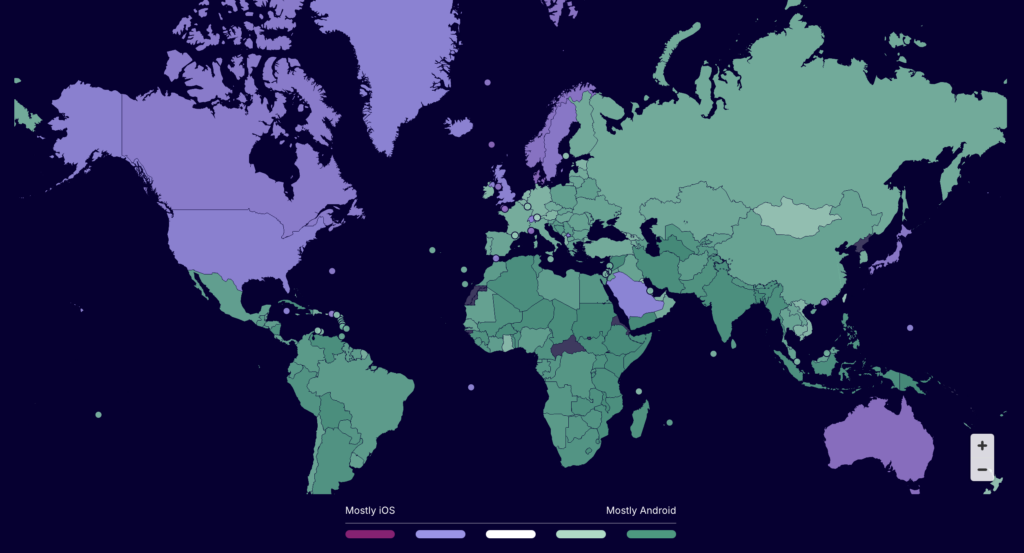
iOS wins in North America minus Mexico, Scandinavia, UK, Saudi Arabia, Japan, and Australia. Android is predominant pretty much everywhere else.
Market share is 1 thing; revenue share is another. While all the above is true, in 2023 the App Store took in $89.6 billion of app users’ money, while Google Play took in $47 billion. While there are exceptions, iPhone owners tend to spend about double what Android users spend, making iOS still the most attractive mobile operating system for app publishers and marketers.
Google is the world’s default search engine
OK, this is no shock in a year in review: Google wins everywhere. But it is a little surprising how dominant Google remains globally.
- Overall: 88.5%
- Android: 90.2%
- iOS: 91.2%
- Windows: 80.1%
- Mac: 93%
Honorable mention to Bing on Windows, with just over 10% share.
But the big question is what ChatGPT will do to this global dominance. I pay for OpenAI’s $20/month subscription, and it’s taken over at least 70% of my internet searching, which would otherwise be split between Google and DuckDuckGo.
Also, antitrust efforts in the U.S. and other countries might have something to say about where Google Search goes over the next few years.
Mobile vs desktop year in review
Somewhat surprisingly, desktop still wins in global share of traffic versus mobile. According to Cloudflare, only 41.3% of internet traffic is from mobile devices.
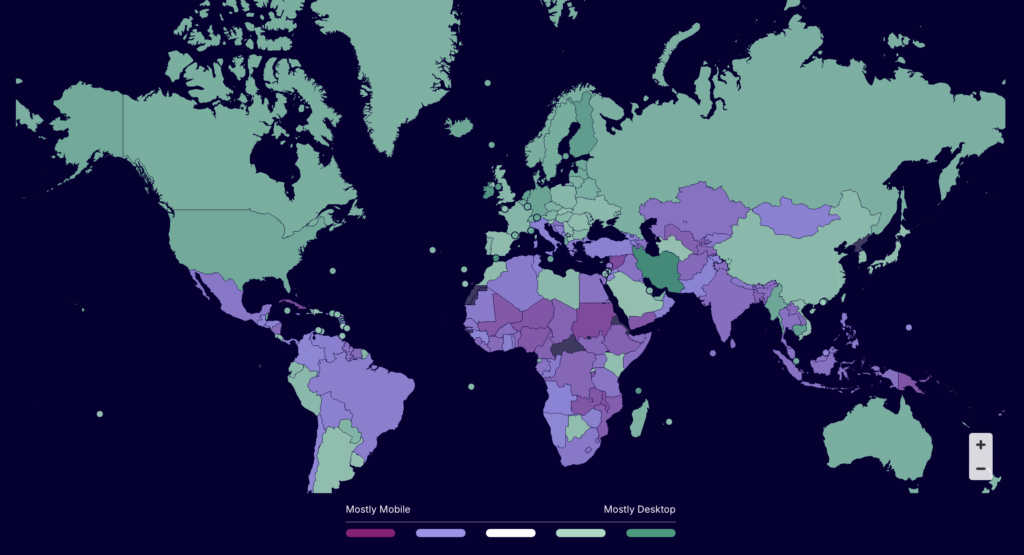
Desktop wins largely based on economics: richer countries tend to have more desktops and more internet use in general. But it’s not just NA and Europe. Peru and Argentina are majority desktop, as are Libya, Kenya, and Botswana. China is majority desktop, and so are Japan and South Korea.
This is important info for marketers using web for mobile UA, or cross-device marketers.
Desktop is not dead, and it likely has a long future ahead of it.
Almost half of internet outages are government caused
Those of us who are worried about the ongoing balkanization of the internet that is putting up barriers to publishing apps and building international companies won’t be happy to see this in the Cloudflare year in review: more than half of the internet outages in 2024 were government directed.
We’ll likely see more of that in 2025 and following, as there is increased digital nationalism and rejection of foreign company’s apps in locations like India, China, Russia, Bangladesh, and the United States.
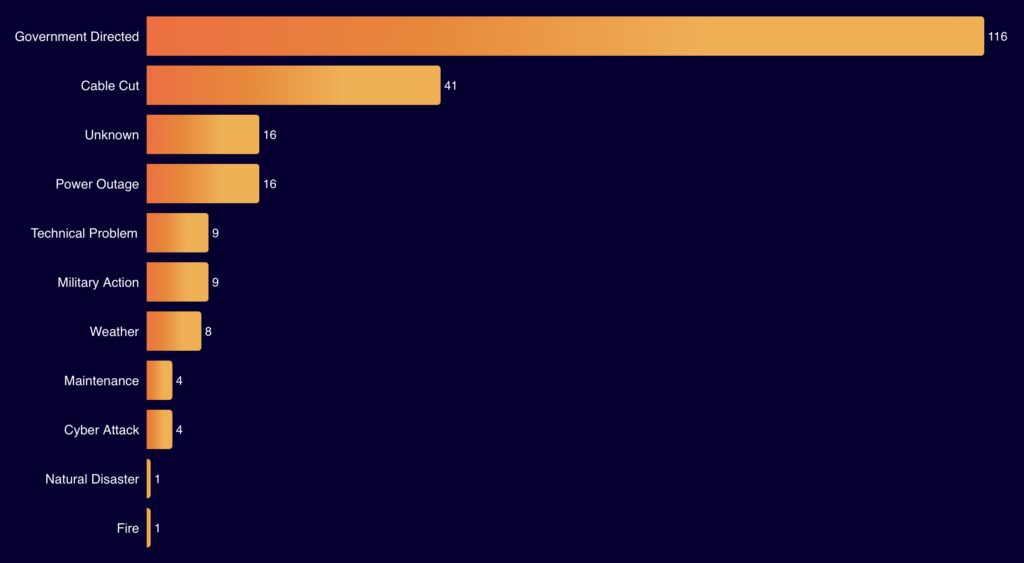
And we might see more examples of what Indonesia has done recently: ban the sale of iPhone 16s and recent Google Pixel phones because Apple and Google have not invested enough money in local economies.
India has similar legislation, which is why Apple now builds iPhones in India, but that’s an enormous market that is a much easier yes for smartphone manufacturers to say yes to.
Much more in the full report
There is, of course, much more in the full report. But these are some of the most relevant parts for digital marketers, and especially mobile marketers.
